Paddleboarding requires lots of little tidbits of information if you really want to get the best out your trusted paddleboard.
For example knowing what type of leash is best depending on your intended use can drastically impact how effective you are able to perform the task.
A good example would be if you are SUP touring you will most likely want a coiled leash so it is shorter and doesn’t drag in the water behind the board.
Another good tibdit is whether or not you should or need to wax your paddleboard.
If you have an epoxy hardtop paddleboard without a full length traction pad you will want to apply wax to your paddleboard.
If however, your board features a full length traction pad (sometimes known as a deck pad) or is an inflatable paddleboard you should not apply wax to your paddleboard.
Now of course there are also some variations to this rule but generally if you stick with the above you can’t go wrong.
Why Do We Wax Hardtop Paddleboards?
Now we know that we should only wax hardtop paddleboards and that we only need to wax them if we don’t have a full length traction pad we may wondering
‘Why is that?’
Well the short answer is because it provides traction for when you are standing on the board.
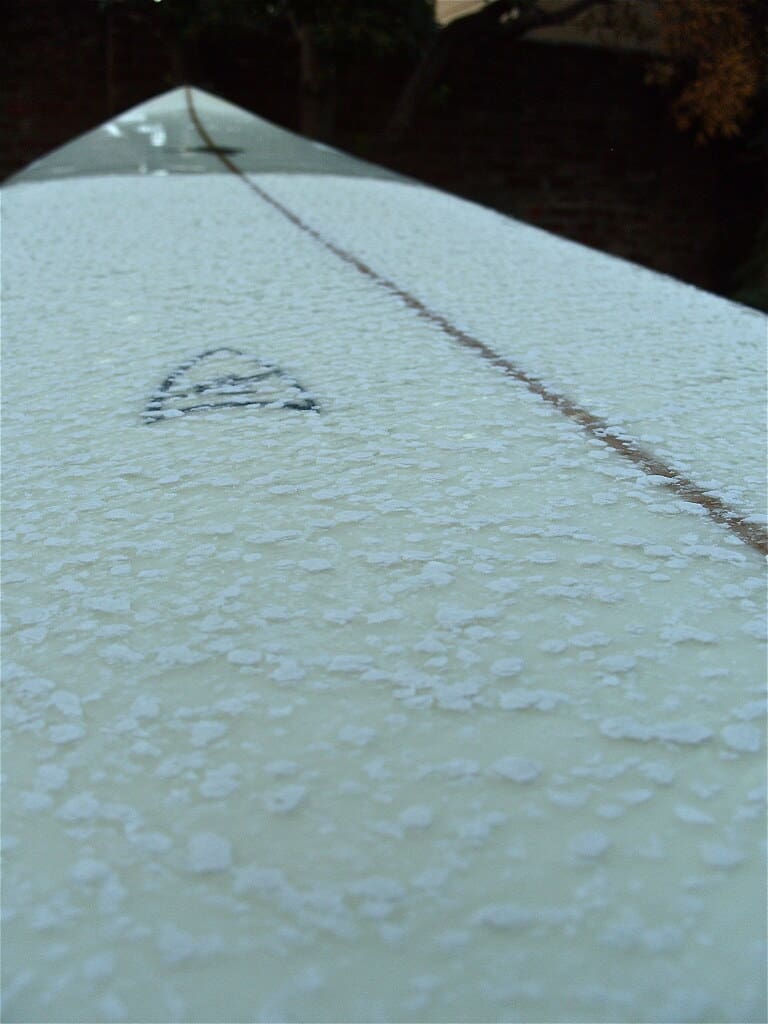
The wax acts much like a griptape does on a skateboard.
When the board gets wet it causes it to become very slippery, by adding wax it stops you sliding round on your board like a mario kart character who just hit a banana trap.
The more scientific answer as to why you should wax a paddleboard is as follows:
When you wax a board you begin to create small bumps on the surface, the different layers and levels create traction points, as your foot moves across the layers it creates friction between your foot and the wax which offers a large amount of grip and prevents you slipping.
How To Wax A Paddleboard
Knowing the reason as to why you wax a paddleboard is one thing, but knowing how to wax your paddleboard is completely different.
When it comes to waxing your paddleboard the first thing you want to ensure is that your board is thoroughly cleaned to ensure when you begin waxing the wax adheres to the board,
To start waxing a paddleboard you will want to pick an area to start in (I would suggest the tail of the board).

Once you have chosen your starting position you will want to get your wax ready and remove the packaging.
To get the best performance from your wax job you will want to apply a base coat and a top coat.
Pick up the wax that is designed for your local water temperature and apply the wax to the board.
There are multiple ways to apply wax to your board and there are various waxing patterns, there isn’t really a right or wrong way to wax your paddleboard but I generally like to apply my base coat of wax using small circular motions.
By waxing the board in small circular motions you can ensure that plenty of wax is deposited across all areas of the board.
Repeat this pattern until the full board (or at least all the areas you are likely to stand) is covered in wax.
Once completed I recommend going over the area again to build up the base coat using a couple of layers.
The base coat is by far the most important layer so take your time and get this part right,
The base coat is the layer that keeps your board nice and grippy.
Once you have completed your base coat you can start on your top coat.
Now one thing to consider when applying the top coat is that you need to ensure the wax you apply is softer than your base coat.
It doesn’t necessarily matter which wax you choose providing it is softer.
It also doesn’t particularly matter which pattern you use to wax your board as this layer is designed to make your wax job stickier and therefore more grippy.
I generally like to wax my board using a crosshatch pattern for my top coat. (I appreciate you wax probably isn’t yellow, it was just for sure I promise)
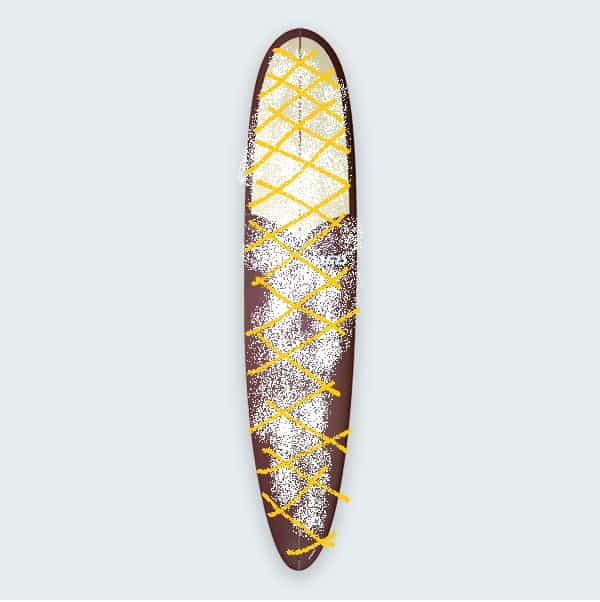
One reason for this is because it is quick and easy to ensure your board gets a full coverage
And speaking from experience, by the time I am applying my top coat I am itching to get in the water.
How To Know Which Wax You Need?
So if you have just pulled up a browser and started looking at wax for your paddleboard, you will notice there are alot of different brands, colours, water temperatures.
The wax that I tend to use the most is Mr Zogs Sex Wax or Mrs Palmers Surf Wax.
There are other reputable brands available such as stickybumps and matunas however these aren’t as available in my local area so I tend to stick with my first two recommendations.
Knowing which brand of wax to choose is still only half the battle though as you will notice that both of these brands offer different hardness or waxes designed for different water temperatures.
Mr Zogg’s have actually put together a really helpful little chart which clearly shows which wax you need for your local water temperature.
This chart will see you well regardless of whether you choose Mr Zog’s or not as it clearly shows at what temperatures the water is considered extra cold, cold, cool, warm and tropical.
When selecting your base coat you want to ensure the wax you use is perfect for your local water temp, as for the base coat you want to select a softer wax.
For example where I paddleboard on the south coast I generally go for a cool base in the summer months with a top coat of cold, as we move into our winter months I am normally using a cold base with an extra cold top coat.
If you are unsure on your local water temperature you can find this information using your local government or council website. Alternatively you can sites like Magicseawood.com which report on the most popular surf spots around the world.
Should You Wax A Soft Top Paddleboard
When you read my original snippet at the top of the page, you may have been wondering where the soft top board is mentioned.
Now I must admit I did specifically miss this one out.
That’s not because I don’t have the answer, it’s more because the answer can be both yes and no as to whether you should wax your soft top board.
Fun fact I actually started out surfing on a soft top surfboard and to be honest it was actually really fun to surf on.
With that being said though you would think the foam would be nice and grippy but I did not find that to be the case at all.
The second that board got wet, especially after several uses, the grip lessened each time and it became rather slippery.
To counteract this I simply applied some wax.
Many board manufactures will state that they have new foam technology which is specially designed to keep you stuck to your board but quite frankly the technology just isn’t there yet.
And while I get that paddleboarding and surfing are different beasts I feel the answer for me remains the same.
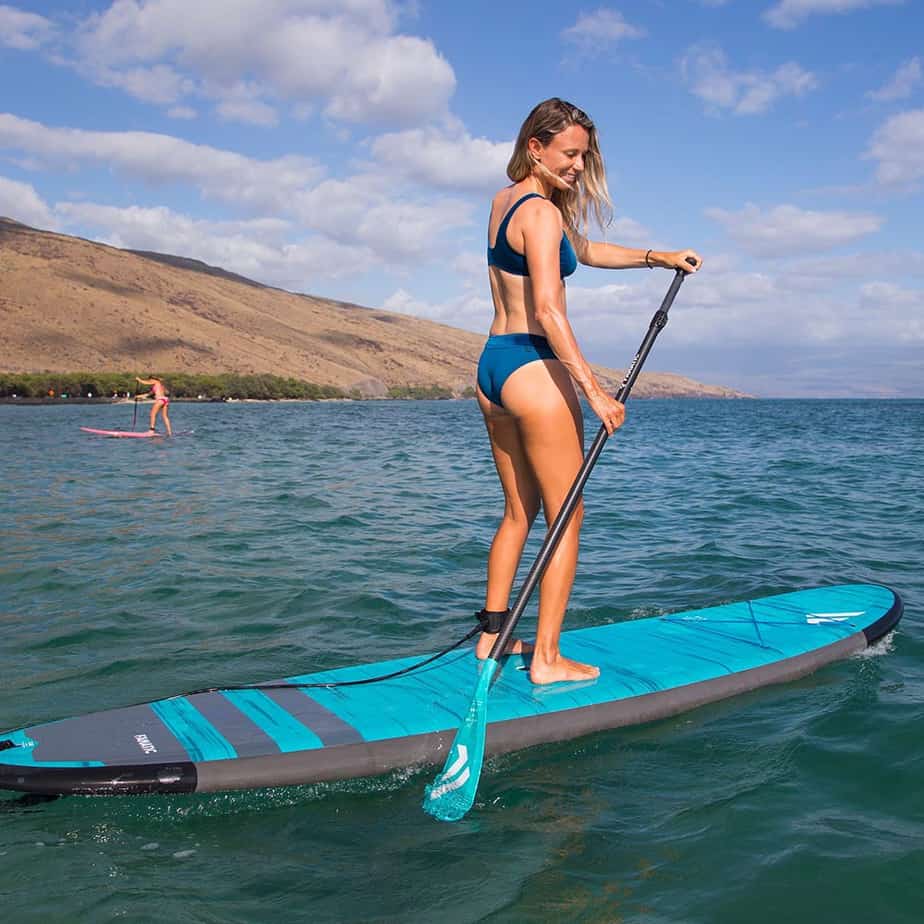
I would suggest trying your soft top board a few times without wax and if you notice you are slipping around then give it a go.
There are a few exceptions to this rule though.
The main exception is if your board has a built in traction pad.
The traction pad on a board offers a good foot bed and if you have a nice lengthy traction pad you will not want to apply any wax to this.
Why Shouldn’t You Wax An Inflatable Paddleboard
The main reason why you shouldn’t wax an inflatable paddleboard is well,
Because you don’t need to.
Now I am happy to be corrected on this but as of yet, I have never seen an inflatable paddleboard without a very large traction pad.
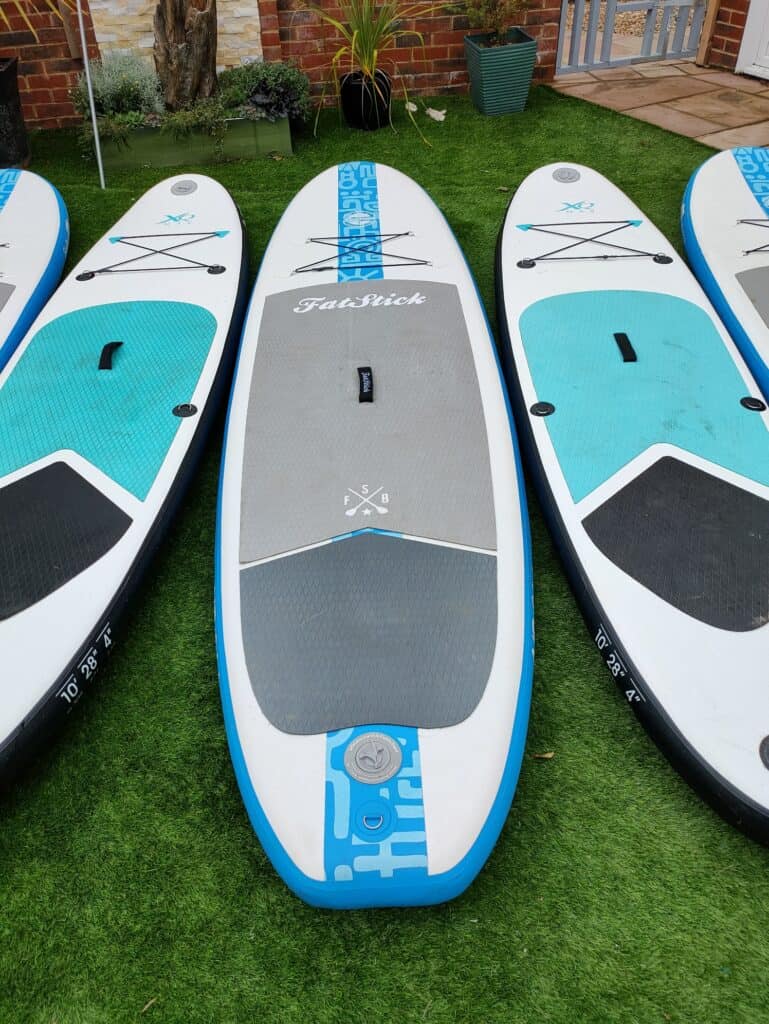
The second reason why you shouldn’t apply wax to your inflatable paddleboard is because the process of applying wax can be quite extreme and intense.
When you are waxing a board you need to apply quite a large amount of pressure to ensure the wax comes off the board and sticks to your board.
Applying this amount of pressure to your board using a hard bar of wax could cause stress marks or damage to the surface of the board and the last thing you want is a puncture or weak spot on your inflatable ride.
No Wax Needed On A Traction Pad
Now we know the sole purpose of wax on a paddleboard is to create a traction so we don’t slip and slide around.
It shouldn’t come as a surprise to hear that this obviously means we don’t need to apply wax to our traction pads.
Traction pads are specifically designed in a way that ensures we have a good footing when out paddling.
So with that being said Do not wax your traction pad.
The beautiful thing about traction pads is that they are often glued to the surface of the board, so if you feel that your traction pad is beginning to lose its grip and be past it’s lifespan you can simply purchase a new one and replace it.
I have actually written an article already talking about how to replace a traction pad so head over there for more information on how you go about doing this.
Should You Put Wax On The Bottom of the Paddleboard
This is a question that I have actually been asked an extremely large number of times.
Personally I have never really understood where this notion came from.
The only thing I can attribute it to, is that when you watch skateboarders grinding a rail, raised flower bed, bench or other grindable feature.
You will often see the skateboarders applying wax to the rail to ensure they slide better when grinding.
So the only thing I can think is that people believe by waxing the bottom of their paddleboard it will allow them to glide through the water better?
The simple answer is though.
You should not apply wax to the bottom of your paddleboard. By applying wax to the bottom of the board you create additional friction between the board and the water which will increase the amount of drag therefore slowing you down.
Wax is used on paddleboards to create layers that build up friction between your foot and the board for better traction.
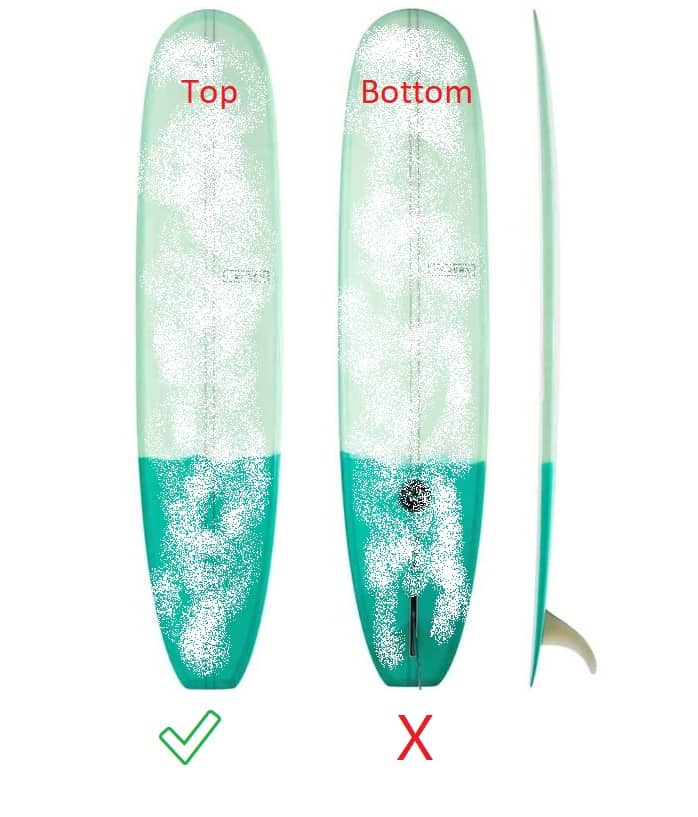
Keep your wax topside and the bottom buttery smooth to glide effortlessly through the water.

